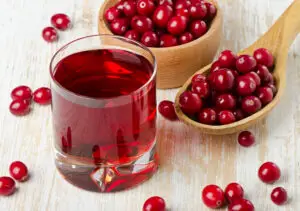Grapefruit, a popular citrus fruit, is known for its tangy and slightly bitter taste. It comes in different varieties, with red and yellow grapefruit being the two most common types found in supermarkets and enjoyed by consumers worldwide.
These two grapefruit varieties, although from the same family, have slight differences that may influence one’s preference or usage in recipes.
Red grapefruit is known for its vibrant colour, courtesy of its high lycopene content. This natural pigment not only gives the fruit its distinct hue but also offers various health benefits.
On the other hand, yellow grapefruit, sometimes referred to as white grapefruit, is the more traditional variety and presents a slightly paler appearance. While it lacks the lycopene content of its red counterpart, yellow grapefruit still offers an array of nutrients such as vitamin C and potassium.
When it comes to taste and nutrition, red and yellow grapefruits hold their own unique qualities. Red grapefruits tend to be sweeter with a deeper flavour and are known for their higher vitamin A content.
In contrast, yellow grapefruits have a more tart taste and may contain less sugar; however, they still provide ample health benefits. Thus, choosing between red and yellow grapefruit ultimately comes down to personal preference and intended culinary use.
History and Origin of Grapefruit
Grapefruit, a unique and popular citrus fruit, has an intriguing history and origin. It is believed to have originated in the Caribbean islands less than 300 years ago as a hybrid between a pummelo and a sweet orange.
The fruit is primarily grown in Southeast Asia, where it has been cultivated for centuries. The grapefruit eventually spread to other parts of the world due to its distinctive flavour and health benefits.
The grapefruit’s name is thought to refer to the way it grows in clusters on a tree, similar to grapes. The fruit’s unique taste and appearance make it stand out among other citrus fruits.
Its popularity has grown significantly over the years, with China being the largest producer of grapefruits, contributing 54% of the total global production in 2021.
Grapefruit trees thrive best on sandy, relatively fertile soils, and can be found in a variety of climates and environments.
The fruit itself comes in two primary varieties: red and yellow grapefruit. While they share many similarities, there are some key differences between the two types.
For example, red grapefruits tend to have higher levels of Vitamin A, while yellow varieties are known for their higher Vitamin C and potassium content.
In conclusion, the history and origin of grapefruit are deeply rooted in its hybrid nature, resulting from the cross between a pomelo and a sweet orange. With numerous health benefits and a distinctive flavour, grapefruit has become an integral part of the citrus fruit family.
Different Types of Grapefruit
Grapefruits come in various varieties, providing both differences in appearance and taste. Here, we will discuss some of the most popular types of grapefruit, ranging from white to pink and red varieties.
White Grapefruit is often referred to as yellow grapefruit due to its pale flesh. This type is known for its thick rind and rather firm texture. It is a good source of vitamin C, fibre, and antioxidants, and is known for its tangy and slightly bitter taste.
Pink Grapefruit is another popular variety that has a slightly sweeter taste than the white grapefruit. Some studies suggest that pink grapefruit juice is one of the most nutrient-rich fruit juices available.
Ruby Red Grapefruit is a popular red variety in the United States. It has a deep red flesh, which is usually an indication that the grapefruit is sweeter compared to lighter-coloured varieties.
Duncan Grapefruit is a classic white grapefruit variety known for its rich flavour and numerous seeds. It is a popular choice for those who appreciate the tangy flavour of traditional grapefruit.
Star Ruby Grapefruit has a beautiful deep red flesh colour and is considered one of the reddest and sweetest varieties of grapefruit available.
Flame Grapefruit is another red variety known for its sweet flavour. It is similar to the Star Ruby Grapefruit, but has a thinner rind and is less acidic.
Marsh Grapefruit is a seedless variety of white grapefruit. It has a smooth and shiny appearance and is a popular choice for consumers who prefer a seedless option.
Oro Blanco Grapefruit is a cross between a pomelo and a white grapefruit, characterised by its bright green to lemon yellow skin, a thick rind, and sweet flesh with almost no bitterness.
Melogold Grapefruit is a larger and sweeter variety compared to standard grapefruit, with skin ranging from pale to dark lime-green. The flesh of this grapefruit can be either pale or deep yellow.
In conclusion, there is a wide range of grapefruit varieties available, each exhibiting unique characteristics in terms of taste, colour and size. Exploring these different types can help you find the perfect grapefruit to suit your preferences.
Geographical Distribution
Grapefruits, both red and yellow varieties, are predominantly cultivated in warm climates, especially in the United States.
The major grapefruit-producing states within the US include Florida, Texas, and California. Each of these states offers favourable growing conditions, which contribute to the diversity of grapefruit types available across the US.
Florida holds the most significant market share among the grapefruit-producing states. The subtropical climate in this region, with its warm temperatures and mild winters, is ideal for grapefruit cultivation.
In Florida, the Indian River area is particularly known for its abundant citrus groves, including grapefruit, hence the popular “Indian River Grapefruit” label. Red and yellow grapefruit extensively grow in Florida, and the state’s grapefruit industry has become a vital component of the regional economy.
Texas, especially the Rio Grande Valley, is another major grapefruit-growing region within the United States. Known for its Ruby Red grapefruit, Texas has a distinct climate, which includes more arid conditions, resulting in grapefruits with a unique taste profile.
This pink or red variety is sweet and recognised for its sturdy peel, making it ideal for export to other states and countries.
California also contributes to the country’s grapefruit production, albeit to a lesser extent compared to Florida and Texas. The diverse microclimates within California allow for the cultivation of several grapefruit types, including the Marsh, Oro Blanco, and Star Ruby. These varieties thrive well in Southern California, where temperatures remain relatively consistent year-round.
In summary, grapefruit, in both red and yellow forms, predominantly grow in Florida, Texas, and California. Each state’s unique climate and geographical conditions contribute to the variety and distinct flavour profiles found in grapefruits produced across the United States.
Physical Characteristics
Red grapefruit and yellow grapefruit are both popular citrus fruits, but they exhibit some distinct differences in their physical characteristics. For those looking to distinguish between the two, an understanding of these traits can be helpful.
When it comes to the skin of these grapefruits, both red and yellow grapefruits have slightly different appearances.
Red grapefruits typically have a yellow-orange skin, which may or may not have a slight blush. Yellow grapefruits have a relatively yellow skin with a slightly golden hue. Both types of grapefruit have a smooth and glossy skin.
The rind thickness of these grapefruits varies as well. Red grapefruits have a medium-thick rind, while yellow grapefruits tend to have a thicker rind. For example, the Oro Blanco grapefruit, a type of yellow grapefruit, has a thick rind and is known for its sweet flesh and mild flavour.
Seedlessness is a desirable trait in most grapefruit varieties, with red and yellow grapefruits often bred to be seedless or nearly seedless. However, despite efforts to reduce the number of seeds, some grapefruits may still contain a few seeds.
In summary, red and yellow grapefruit can be distinguished based on their different skin colours, rind thickness, and degree of seedlessness. Knowing these physical characteristics can help consumers and growers alike identify and appreciate the unique traits of both types of grapefruit.
Taste and Flavour Profile
Red and yellow grapefruit, despite being from the same family, have a few subtle differences in taste and flavour profile that make them unique.
The flavour of a red grapefruit is slightly sweeter than its yellow counterpart, with a balanced blend of tart and sweet notes. This makes red grapefruit particularly versatile for a range of palates as it offers a pleasant mix of sweet and sour sensations, without being overly bitter.
On the other hand, yellow grapefruit is known for its distinctive tart flavour, with a predominance of sour and bitter notes. This may make it less appealing to some individuals, especially those who have a preference for sweeter tastes. Nevertheless, this sour profile also has its own charm and can be enjoyed by those who appreciate the burst of tanginess that yellow grapefruit provides.
In terms of texture, red grapefruit tends to be juicier and softer, making it more pleasant to consume as a fresh fruit or as a part of a fruit salad.
Yellow grapefruits, while still maintaining a firm texture, can be somewhat stiffer when compared to their red counterparts. This difference may affect the eating experience, with red grapefruit being more enjoyable to some due to its softer, more refreshing mouthfeel.
Overall, the taste and flavour profile of red and yellow grapefruits cater to different preferences. Red grapefruit, with its balanced combination of sweet and tart notes, is suitable for those seeking a mellow, yet flavourful citrus experience. On the other hand, yellow grapefruit offers a more tangy, sour profile that can be appreciated by those with an inclination for strong and tart flavours.
Nutritional Profile and Health Benefits
Red and yellow grapefruits both offer a variety of nutrients and health benefits. One significant difference between the two types is their Vitamin A content. Red grapefruits contain a higher level of this essential vitamin, with one cup providing around 50% of the daily recommended intake, according to the USDA Nutrient Database.
Both red and yellow grapefruits are rich in antioxidants, which help protect cells from potential damage caused by unstable molecules called free radicals. Vitamin C is a powerful antioxidant present in both types of grapefruit, with red varieties containing approximately seven times more than grapes.
In terms of other nutrients, grapefruits are a good source of potassium, an essential mineral for maintaining healthy muscles and regulating blood pressure. Additionally, they are rich in calcium and magnesium, which contribute to bone health and proper nerve function.
The fibre content of grapefruits is beneficial for promoting digestive health and weight management. A single half grapefruit contains around 2 grams of fibre.
Lycopene, a powerful antioxidant, is found in red grapefruits. This compound has been linked to various health benefits, including heart health, eye health, and a reduced risk of certain types of cancer. Its presence gives red grapefruit its distinctive colour and makes it a particularly potent source of antioxidants.
Overall, both red and yellow grapefruits offer a range of essential vitamins and minerals, as well as additional health benefits such as aiding weight loss, supporting heart health, and promoting a robust immune system.
Incorporating these nutritious fruits into a balanced diet is a simple way to benefit from their numerous health-boosting properties.
Use in Diet and Recipes
Grapefruits, both red and yellow, can be easily incorporated into various dishes and recipes to add a refreshing burst of flavour and nutritional benefits. They are often used in salads, freshly-squeezed grapefruit juice, and various other grapefruit recipes.
In salads, red and yellow grapefruits can be combined with ingredients like greens, avocados, nuts, and feta cheese to create a delicious and nutritious meal. While red grapefruits are usually sweeter, yellow grapefruits bring a slightly tangier taste to the dish. Both types of grapefruit provide antioxidants, vitamin C, and potassium, which support overall health.
Freshly-squeezed grapefruit juice can be a delightful and hydrating beverage on its own, or it can be combined with other juices for a nutritious blend.
When making grapefruit juice, it is essential to remove the seeds and the bitter pith, as they can spoil the taste. Red grapefruit juice tends to have a sweeter flavour, while yellow grapefruit juice is more tart.
There are also many grapefruit recipes for dishes and beverages. For instance, broiled grapefruit can serve as a simple, warm breakfast or dessert option.
The fruit’s versatility allows it to be paired with various ingredients, such as yoghurt, honey, or spices like cinnamon and ginger. Grapefruits can also be used to create tasty and invigorating cocktails or mocktails, by showcasing their natural citrusy flavours.
In conclusion, both red and yellow grapefruits can be used in diverse recipes such as salads, grapefruit juice, and other dishes, delivering their unique flavours and nutritional benefits. The choice between red and yellow grapefruit depends on personal taste preferences, as their slightly different taste profiles can cater to an array of palates.
Storage and Consumption
When it comes to storing grapefruit, whether red or yellow, it’s important to consider their environment, temperature being key to maintaining freshness.
If planning to consume grapefruits within a week, they can be stored at room temperature in a cool, dry place.
To extend their shelf life up to several weeks, place them in the refrigerator within the crisper drawer, where humidity levels can be controlled.
Before consuming grapefruit, make sure to wash it thoroughly under running water to remove any dirt or pesticide residues. Using a sharp knife, slice the fruit in half horizontally, revealing the flesh inside.
A serrated grapefruit spoon can be used to scoop out the segments, or a knife can be employed to remove each section individually. For juicing purposes, cut the grapefruit into quarters and use a citrus juicer for optimal results.
The grapefruit diet is a popular weight loss plan that involves consuming the fruit, specifically half a grapefruit, before each meal. This diet leverages the idea that grapefruit contains fat-burning enzymes and is low in calories. Both red and yellow grapefruits can be adopted within this regimen; nevertheless, their nutritional benefits slightly vary.
Red grapefruit has a higher content of antioxidants due to its deeper colour, while yellow grapefruit possesses a more subtle, slightly bitter taste.
Regardless of the variation, it is crucial to maintain a balanced diet and consult with a healthcare professional before initiating this plan.
Incorporating grapefruits into daily consumption can enhance one’s overall health and well-being through the various nutritional benefits they offer.
Proper storage techniques—be it at room temperature or in the refrigerator—play a vital role in preserving these benefits. So, whether for casual enjoyment or as part of a structured diet, grapefruits make a tasty and nutritious addition to one’s diet.
Cultural and Symbolic Significance
Red and yellow grapefruits hold different symbolisms in various cultures and traditions. Some perceive grapefruits as the forbidden fruit from the Garden of Eden. While this theory lacks scientific validation, it adds a layer of intrigue and mysticism to the fruit.
In certain Asian cultures, grapefruits, including red and yellow varieties, are regarded as symbols of prosperity and good fortune. This belief is often attributed to their Chinese name, which translates to “golden orange” or “golden apple.” The fruit’s vibrant colour, round shape, and distinctive flavour have made it a popular choice for various Chinese festivities.
Furthermore, grapefruit, specifically the Chinese grapefruit, is often associated with the Mid-Autumn Festival, a celebration that honours the harvest season. It is believed that sharing a grapefruit with loved ones during this festival signifies unity and family togetherness.
Despite the differences in taste and appearance between red and yellow grapefruits, both varieties share a rich cultural and symbolic significance.
Whether it’s representing prosperity in Asian cultures or invoking the mystery of forbidden fruit, the fruit resonates with people across the globe.
My name is Ellis Francis and I have been a personal fitness trainer, sports nutritionalist and health and fitness advisor for over 25 years. I am the lead health and fitness advisor at https://awellnessbody.com.







